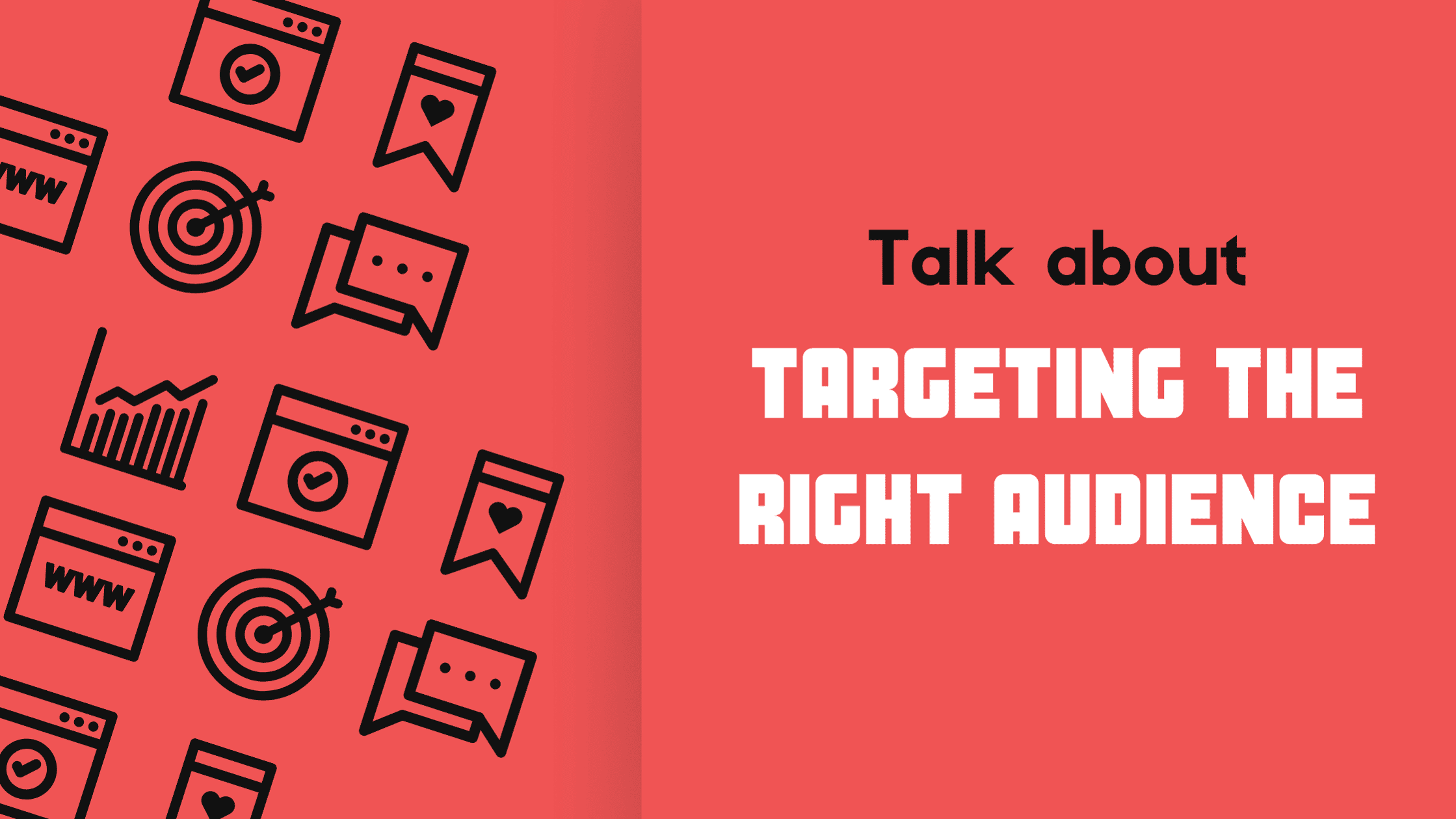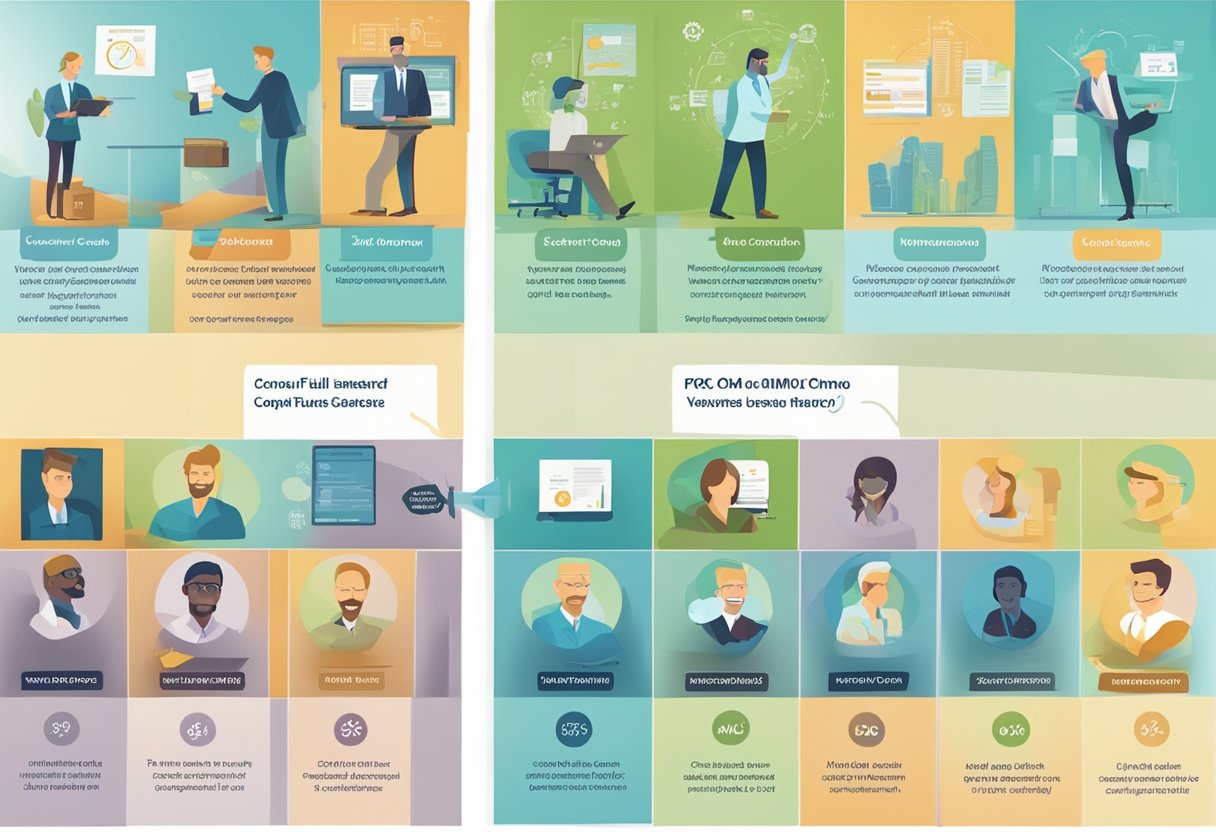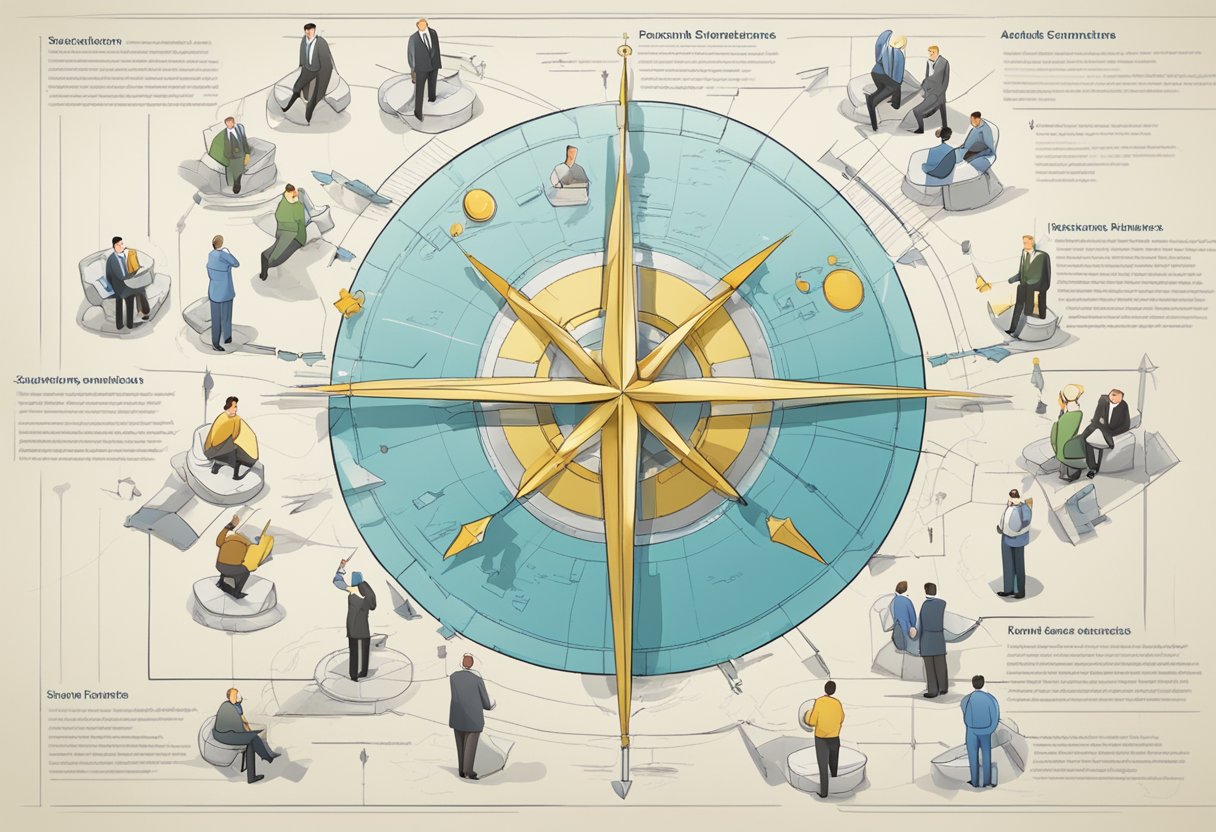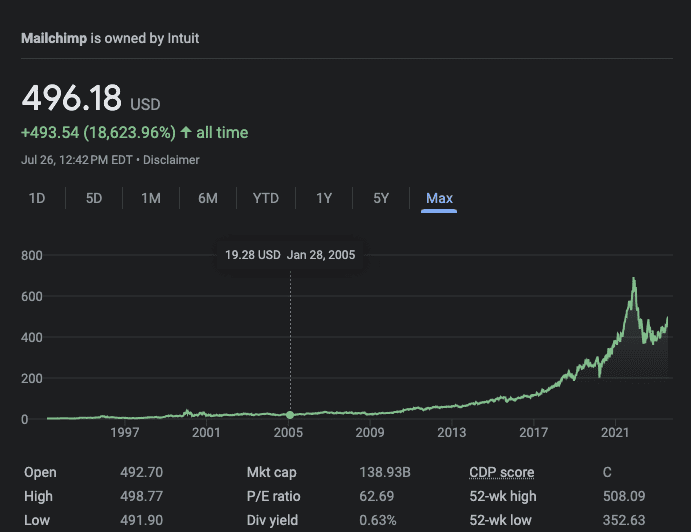Buyer Personas To Target the Right Audience
Who are you marketing to? This is the question that should be at the forefront of every marketer's mind. Trust me when I say this: knowing your...

This is the question that should be at the forefront of every marketer's mind. Trust me when I say this: knowing your audience is the secret sauce to a successful marketing, sales, and customer service strategy.
This blog post will be your go-to guide on how to target the right audience and supercharge your marketing efforts.
Years ago, when I was just starting in marketing, I joined a tech start-up. Our product was revolutionary - an integration solution that could connect any system. Yet, for some reason, we were struggling to make sales. It didn't take me long to realize our mistake: we were so engrossed with our "innovative" product that we forgot to focus on what really mattered - the problems our product was solving.
Your product or service exists to meet specific customer needs. Know it like the back of your hand. Understand its unique features, benefits, and the problems it solves. Only then can you start identifying who might need it the most.

In my early marketing days, I learned that trying to sell to everyone is the same as selling to no one. It's all about precision - zeroing in on the right person at the right time with the right message. Enter: buyer personas.
Creating buyer personas can help you visualize your ideal customers. These are semi-fictional characters that represent your potential buyers, based on real data and market research.
The obvious benefit of having a detailed understanding of who your customers are, is the ability to hone in on the right customers for your business. This is why you may typically see Buyer Personas being talked about from a Marketers perspective.
While Marketing teams are typically the group that is responsible for creating and maintaining personas, it is a massive missed opportunity to not engrain your personas into your Sales and Customer Services teams also.
The logic is simple, your customers don't change once they become customers, they have the same desires, pain points and behaviors, so your personas should enrich every customer facing process within your business.
The simplest way to explain your objective with a Buyer Persona, is that you want to understand your customers almost as well as they understand themselves. What are the drivers behind why someone would be interested in your solution? What are the problems they are facing that you can resolve?
The most important skill in business is empathy, so put yourself in your clients shoes and ask these very important questions.
Buyer Personas should be engrained in the minds of every customer facing team member in Sales, Marketing and Customer Services.
In your CRM, create a field that has the name of each buyer persona that is required for creating new records.
This will force your team to see the persona assigned to each customers, and with proper training, act according to the persona.

A well-crafted persona includes details like demographics, behavior patterns, motivations, goals, and pain points.
Demographics: This includes age, gender, location, income, education, and occupation. For example, for our integration solution, our primary persona was "Busy Brenda," a mid-30s, working IT professional living in urban areas.
Behavior patterns: How do they spend their time? What are their hobbies? Brenda, for example, was tech-savvy and loved using productivity apps.
Motivations and goals: What are they striving for? Brenda wanted to save time and increase her productivity through integration, but her goal was to make the right recommendations to her team on which solution to purchase. Her core motivation was providing value back to her team.
Challenges and pain points: What problems are they facing that your product can solve? Brenda was struggling to find a solution she could confidently recommend, so she needed a trusted partner to help her navigate the integration landscape.

An often overlook component of a Persona is your naming convention. While it may seem obvious and silly, naming your personas something clever and memorable will help your team recall a persona more often and make decisions through, what we call, the "Buyer Persona Filter".
By keeping your customers core considerations at the forefront of your teams mind, you are increasing the probability of successful customer interactions at every stage of the customer journey.
Here are a few examples from our business and our clients.
Each of the examples above are easy to remember and illustrate in two to three simple words the archetype of the persona. Naming your Personas is always the last step when building a persona, because the name will stick around forever, so be thoughtful.
There is no one-size fits all answer to this question, honestly. We recommend utilizing at minimum 2 personas and no more than 5, otherwise, it is harder for your team to fully understand each persona with enough detail for them to augment the way they approach different persona archetypes.
However, for larger organizations that have multiple products, our recommendation is to build buyer personas for each unique product, especially if those products are serving different market segments.
So, the best answer to the question of how many personas you should have is to define your fully define all of the archetypes of your customers in as few personas as possible. Again, we recommend 5 or less.

Market segmentation is another crucial aspect of audience targeting. It's all about breaking down your market into manageable segments based on shared characteristics. The goal? To tailor your marketing strategies and meet the specific needs of each segment by focusing on aligning your solution with their problem and advocating for their success.
Market segmentation comes in various flavors, each serving a unique purpose:
Geographic segmentation: This is based on location. Do you cater to a global audience, or is your market local? For Brenda, we focused on large cities where people often lead a more hectic lifestyle.
Demographic segmentation: This is based on quantifiable population variables, like age, income, education level, and more. Brenda was in her mid-30s, a time when careers can get demanding, and reputation becomes paramount.
Psychographic segmentation: This considers personal characteristics like attitudes, lifestyle, personality, values, and interests. Brenda, for instance, was tech-savvy and loved creative and innovative solutions that she could confidently recommend.
Behavioral segmentation: This looks at usage, loyalty, readiness to purchase, and benefits sought. Brenda was consistently thorough, but ready to purchase if it met her needs.

Another lesson from my early career: never underestimate the power of market research. It's your compass in the sea of the market, guiding your ship (your product or service) to the right island (your audience).
The good news? Market research doesn't have to be daunting. With the right tools and strategies, it can be quite a breeze:
Surveys: Direct feedback from consumers can be incredibly insightful. We used online surveys to understand what our users liked about our app and what they felt was missing.
Social media analytics: Social media platforms can provide a treasure trove of data about your followers. We found that a lot of our audience were members of productivity groups, which helped us tailor our content.
Competitor analysis: Keep your friends close and your competitors closer. Competitor analysis can offer valuable insights about what works and what doesn't in your industry.
When completing Market Research for Brenda, and all of our clients at The Way How, we first start with various SEO tools, such as Moz, SemRush and AhRefs. By running domain analysis on your website, each tool will give you a list of competitors who are ranking for similar keywords to you. This is where the magic happens.
Knowing where your competitors are putting effort in to connect with your Brenda will give you a starting point to build your targeting strategy, while also highlighting areas that your competition is simply asleep at the wheel. If we know Brenda is in an age group that utilizes social media and the competition isn't taking advantage of that, you have a starting point.

Now, with your ideal customer and market segments in mind, it's time to tailor your marketing strategies. Back in the day, we made sure our ads showcased how our integration could help eliminate manual data entry - speaking directly to Brenda.
Remember, people don't want to feel like they're being marketed to, and you are fundamentally competing for attention, not leads. Personalized marketing messages can make your audience feel valued and understood. We made sure to highlight features we knew Brenda would love in our marketing campaigns.
Different channels serve different purposes. For Brenda, LinkedIn and transactionless value-added downloads worked the best.

Marketing is never a set-and-forget process. Regular monitoring helps you adjust your strategies as needed. Remember, your audience can change as your business grows.
We always recommend reviewing and updating buyer personas every quarter to ensure the core assumptions you have made are accurate. At The Way How, not only do we review each Persona every quarter, we hold a company wide meeting to discuss any changes made and encourage our team to be highly critical of those changes based upon their experience with our clients.
It's impossible to miss the constant stream of new social media platforms hitting the market. This present an opportunity and a problem. The opportunity is simple, new platforms gaining users creates a "wild west" scenario if established businesses have not yet moved to the platform.
On the flip side, this also means there is yet another platform that is stealing attention from your potential customers, and again, we are competing for customers attention, like Brenda.
Digital analytics tools were my best friends during my start-up journey. They showed us what was working, what wasn't, and gave us clues about where we should head next.
At The Way How, we believe in work-life balance and that a happy employee makes a great one. So it is important to us that we always focus on activities that have the highest value for our business and our clients. This forces us to always make data driven decisions about campaign performance to optimize every hour of a week towards areas that are working.
Most importantly, however, this also allows us to identify non-performing activities, which is particularly important when consider paid advertising (PPC). If you know you know, but letting an ads campaign run on autopilot can be a... costly endeavor.

To better illustrate these concepts, let's look at a real-life example. MailChimp, an email marketing tool, did a fantastic job with audience targeting.
They identified small businesses as their primary target and tailored their messaging to showcase how easy and effective email marketing could be, helping these businesses grow. They understood the fundamental problem their customers were facing was complex Marketing Automation software that required near development resources to create compelling campaigns.
If you remember though, Mailchimp focused on two key solutions to their clients problems.
They understood what their customers problems were, creating compelling communication around their solution to those problems, and targeted a specific portion of the market.
Their success story serves as a strong testament to the power of audience targeting which has taken them from a small boot-strapped start-up to a $12 Billion valuation
Audience targeting is the compass that directs your marketing efforts to the right people. It's the difference between shouting into a void and having a heart-to-heart with your customer. And as my start-up story shows, it can make all the difference.
Buyer Personas is a document that outlines that characteristics, attributes and key information about your ideal customers. Sometimes referred to Ideal Customer Profiles, Buyer Personas, Customer Vision Briefs etc, these personas give guidance to sales, marketing and customer service teams on how to communicate and engage with customers.
Buyer personas are essential to any marketing, sales, or customer services strategy because they inform your team on what potential customers care about by outlining the problems they face, their goals, communication methods and more. Without a persona, your businesses efforts are guesswork which can lead to significantly higher costs in advertising and wasted time.
A well-crafted buyer persona should include demographics, behavior patterns, motivations, goals, challenges, and preferred method of communication.
Market segmentation breaks down the market into manageable segments based on shared characteristics. It allows businesses to tailor their marketing strategies and meet the specific needs of each segment effectively.
Market research is a compass guiding businesses to understand their audience. It helps gather insights from consumers, analyze competitors, and identify trends, leading to data-driven decisions for effective audience targeting.

Who are you marketing to? This is the question that should be at the forefront of every marketer's mind. Trust me when I say this: knowing your...